NoMad Walk NYC
A historic part of New York City’s Broadway Ave. is reimagined as a vibrant pedestrian corridor by Dutton Architects
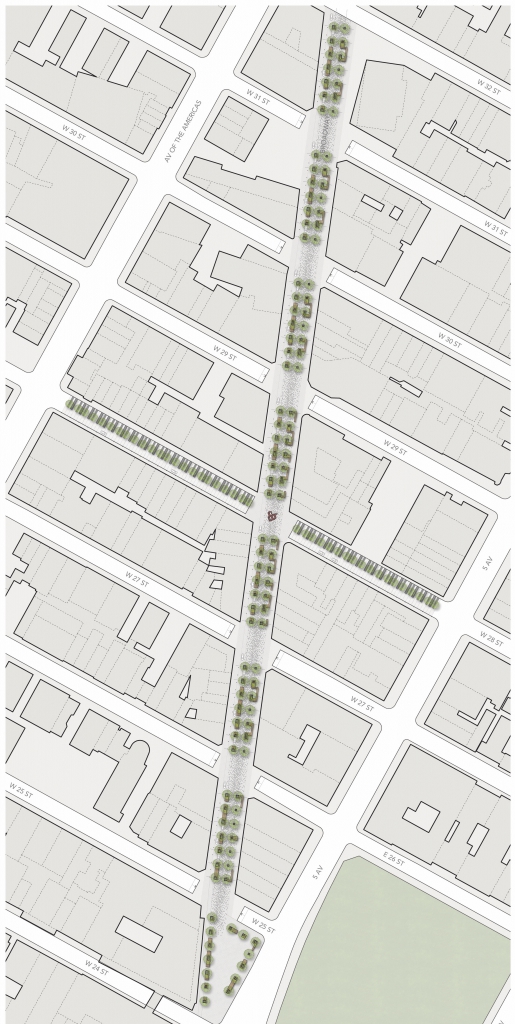
We believe that beautiful public spaces are the best way for people to connect to others in their neighborhood, to attract others to visit, and to tip the scales back away from the car and pavement to people and nature.
An eight-block long linear park becomes a new spine for the burgeoning NoMad neighborhood of lower Manhattan

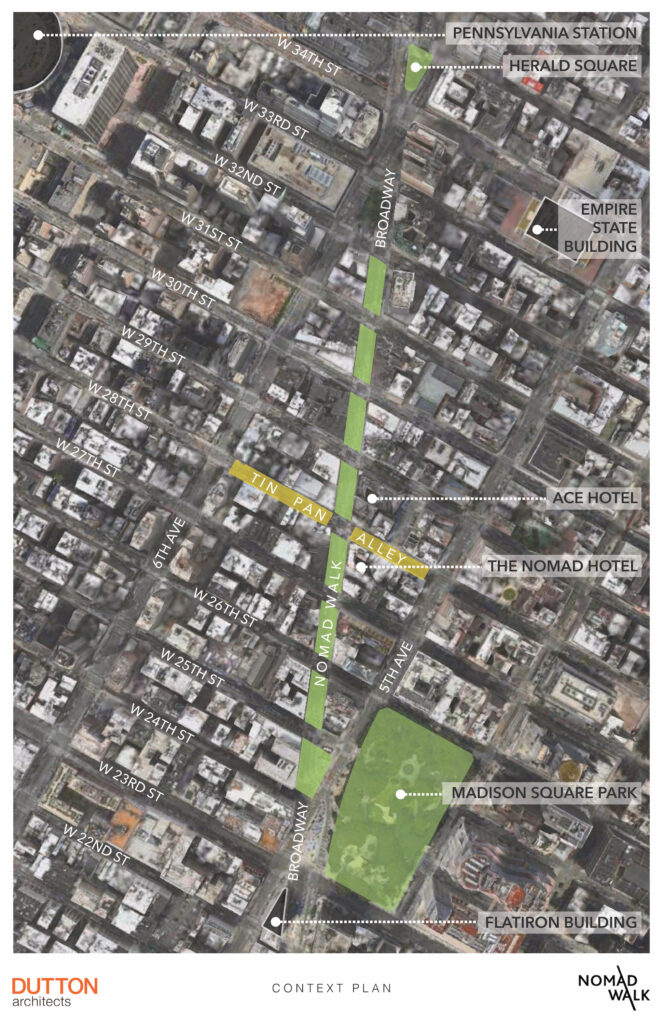

Three easy steps to creating a new linear neighborhood park
The plan envisions raising the level of the road bed to the the sidewalks, creating one long linear plaza. Raised CorTen planters allow street trees to grow as an allée over the subway tracks below. Wood benches undulate down the promenade, creating places to sit alone or socialize, and defining the continuous walkway down the middle of the promenade.
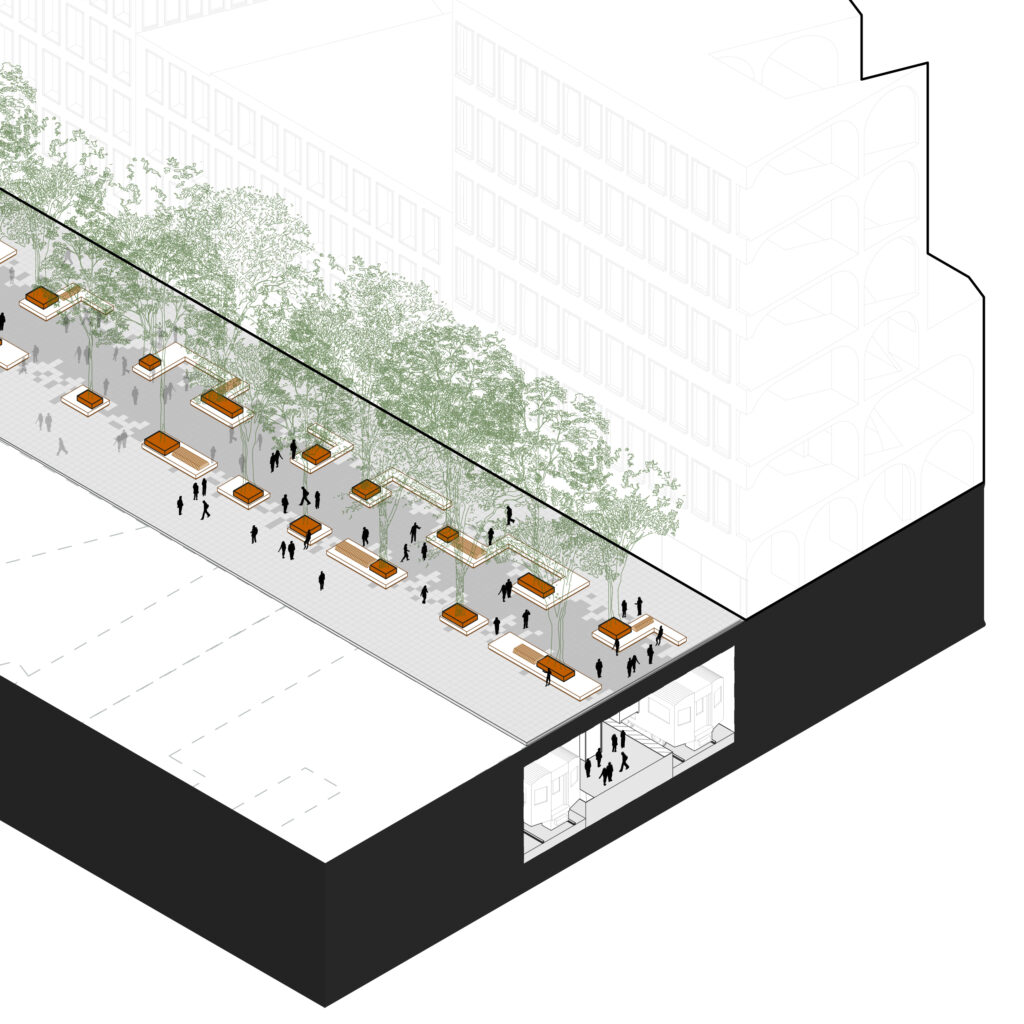
Taming the street
Major transportation infrastructure (subway) is below ground. Cars will be limited above on the new promenade, which is designed to instead prioritize pedestrians.

A new pavement pattern with ribbon of benches and a continuous Allee of shade trees
The road bed is raised to be at a continuous level with the sidewalks. In this way NoMad Walk will feel more like a linear plaza, all public space from one building frontage to the other. New pavement patterns reinforce the uniqueness of this New York City space, and trees create a reduced pedestrian scale and rhythm, as well as bring shade. Raised corten steel and wood benches weave around the trees.
Floating benches weave around new cor-ten planters
View on Broadway looking south toward the Flatiron Building. The design supports our client’s vision to create a unique public space that blends preservation with creative practice, activating history and heritage through innovative urban design and arts programing.
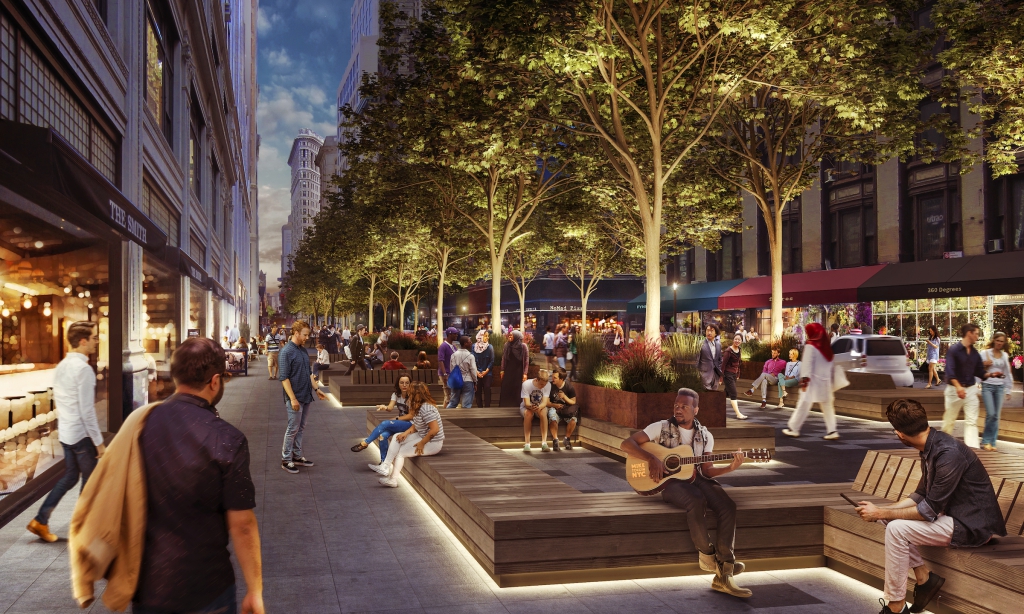

Existing:
cars and pavement and traffic and noise
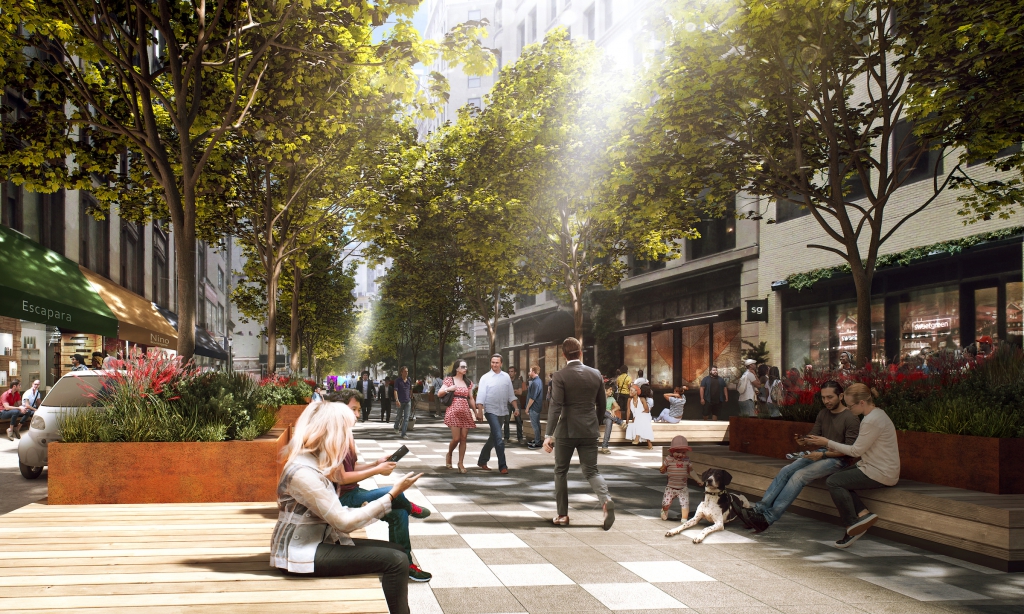
Proposed:
An urban promenade for residents and visitors alike to enjoy lower Broadway in the NoMad District. The new public space will be the focus of the neighborhood, and give it a new identity, much like the High Line a few blocks to the west.

A design to encourage a neighborhood promenade

Broadway: NoMad Walk
The right-of-way of the NoMad Walk is carefully calibrated to balance the central promenade with sidewalks, bench areas, and a single lane designed for autonomous vehicles. These vehicles would provide driving service to the hotels, and taxis for tourists and residents alike.
Blocks with options
The rhythm of street trees are the same all along the promenade. But the wooden benches and platforms an have a variety of forms. The benches can be denser or sparser. The denser, more continuous patterns create a more defined central promenade, and provide more places to sit. The sparser bench arrangements provide more space for gathering for festivals and events, and a more fluid and open sense of space.

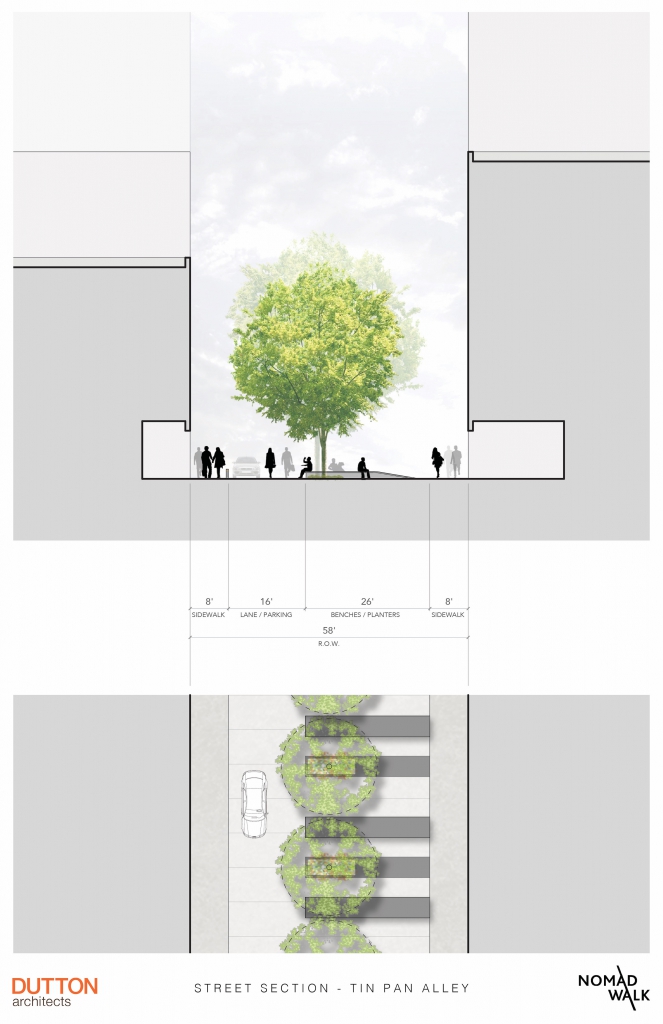
Tin Pan Alley
Along 28th St., perpendicular to Broadway, is the original Tin Pan Alley, home of American popular music.
NoMad Walk will celebrate the legacy of Tin Pan Alley through innovative plaza designs commemorating the contribution of the performing arts to New York City and unique neighborhood events including lunchtime recitals and performances, sound art installations, performance art events, and an annual Tin Pan Fest.

Walking the keys
A series of parallel benches emerge from the sidewalk in a sequence that mimics the black keys of a keyboard. They continue on either side of Broadway (NoMad Walk), the intersection to be marked by a public sculpture.
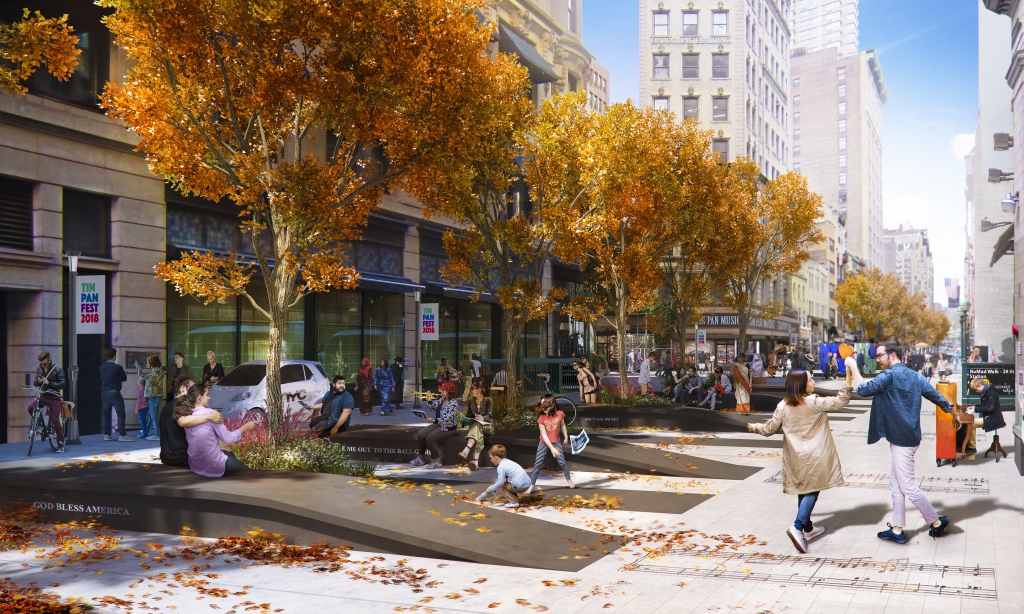
Celebrating music
The new Tin Pan Alley park with public spaces and an interactive design highlights the contributions of this street to American culture. Scores from famous songs are etched in the concrete, and hidden speakers stream clips of the songs. Fanciful benches and planters emerge from a keyboard-like pattern along the sidewalk.


